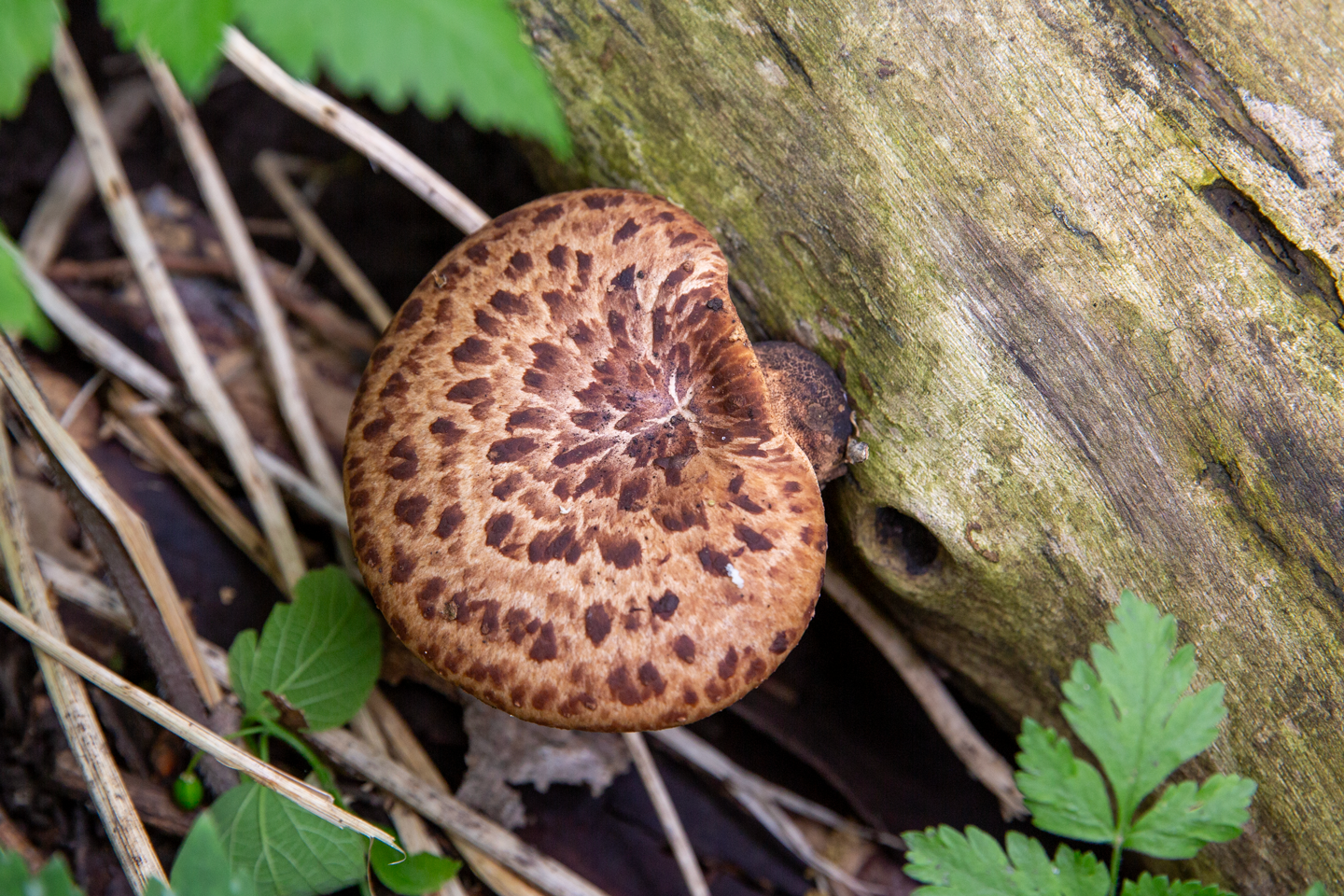
By Greg Wagner
You thought this blog was going to be a hunting-oriented one, didn’t you?
Well, it is, sort of.
Allow me to introduce you to the Pheasant’s Back mushroom or correctly called, the Dryad’s Saddle (Polyporus squamosus).
For purposes of this blog, I will refer to it in the colloquial sense as the Pheasant’s Back.
I hate to be cliché but this is a “diamond in the rough.”
While you are foraging for morel mushrooms this season, consider harvesting the Pheasant’s Back. The mushroom’s cap has a unique appearance, featuring large, brown scales that resemble a ring-necked pheasant’s back.
It typically grows amid the same habitat as morel mushrooms (see my morel hunting blog for more info), including moist river and creek bottom woodlands. However, the Pheasant’s Back differs from morels in that it grows on hardwood or deciduous trees, particularly cottonwoods and elms.
Identification
Appearance
This large, scaly, fleshy, bracket fungus is typically light brown, roundish, and can be creamy yellow or whitish. Big, brown scales give it somewhat of a pancake-like appearance. It has a short stalk and yellowish white pores.
Lookalikes
The Pheasant’s Back is actually very easy to identify and whose lookalikes are not edible due to their tough, leathery texture. Accurate identification is imperative to avoid health implications. Make sure to do a spore print.
Spore Print
The spore print of the Pheasant’s Back is white. The spores magnified are oblong, elliptical and smooth.
Size
The Pheasant’s Back can grow quite large, often exceeding a foot in diameter, but most are around three or four to six inches.
Flesh
The flesh or meat of this mushroom is firm and white but becomes tough and corky as it ages and gets larger. Larger specimens may possess insects as well.
Habitat
The Pheasant’s Back grows on deciduous trees whether living, decaying or dead, and lower to the ground in a shelf-like manner.
Scent
It has a distinct scent, often described as a unique blend of fresh cucumber, watermelon rind and earthiness.
Edibility
Best When Young
The Pheasant’s Back is a choice wild edible, especially when young and tender. Collect before the mushroom gets much bigger than the circumference of a standard ceramic coffee cup (3-4 inches).
Preparation
Remove the stem and any tough, woody portions of the fungus. Then, gently rinse the pheasant’s back caps under cold running water. With a dampened paper towel, or dampened soft kitchen towel, carefully wipe the pores of the underside of the mushrooms or scrape them off with a paring knife. Next, drain and pat dry the remainder. Give it a quick salt-water soak and then a rinse.
Cooking
Like any wild mushroom, the Pheasant’s Back needs to be cooked. Here’s how: Cut off the tender edges of the Pheasant’s Back, slice them into small pieces and pan-fry or sauté them in butter and minced garlic. Diced Pheasant’s Back mushrooms are also nice additions and flavor enhancers to various meat entrées such as falafel or hamburger patties. The Pheasant’s Back has a mild, nutty taste (the cucumber/watermelon/earthiness odor disappears with cooking) and a sort of crunchy texture. After cooking, remember to sample only a small amount of the mushroom at first, since some people are allergic to chemicals in certain fungi.
Ecological Importance
Nutrient Cycling
The Pheasant’s Back plays a crucial role in woodland ecosystems by breaking down wood and returning nutrients to the soil.
